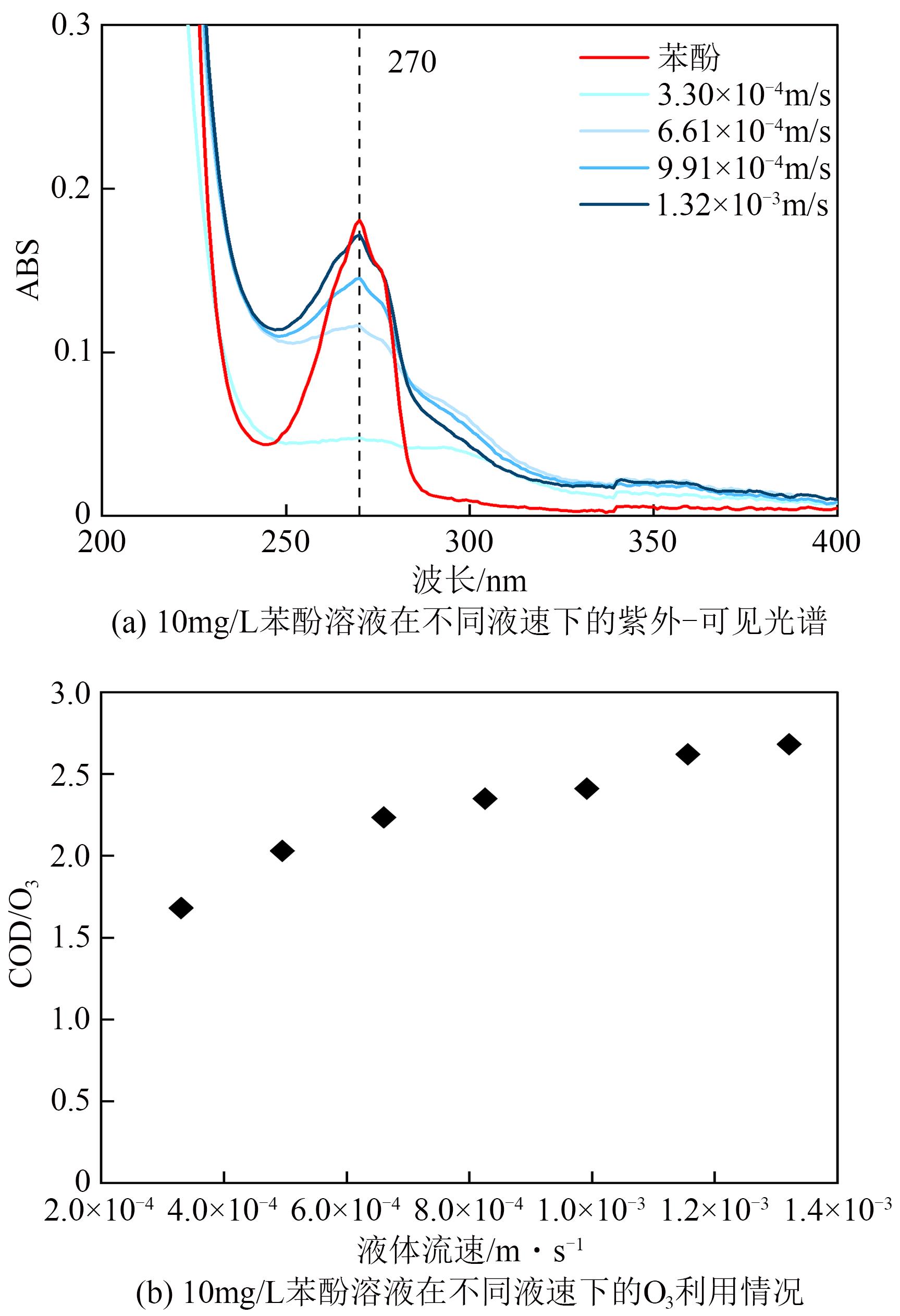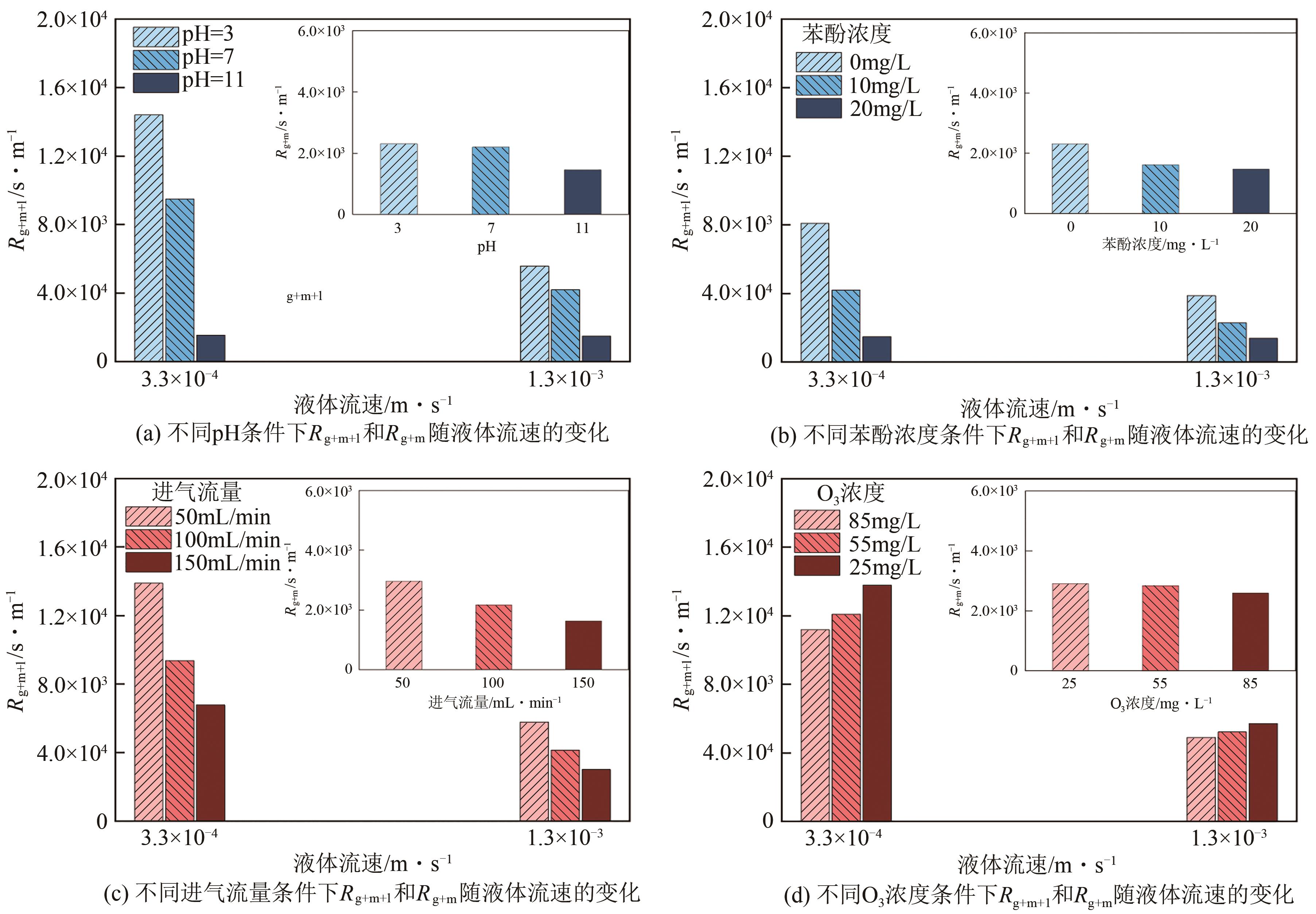| 1 |
VAN AKEN P, LAMBERT N, VAN DEN BROECK R, et al. Advances in ozonation and biodegradation processes to enhance chlorophenol abatement in multisubstrate wastewaters: A review[J]. Environmental Science: Water Research & Technology, 2019, 5(3): 444-481.
|
| 2 |
HAN Qi, DONG Wenyi, WANG Hongjie, et al. Degradation of tetrabromobisphenol A by a ferrate(Ⅵ)-ozone combination process: Advantages, optimization, and mechanistic analysis[J]. RSC Advances, 2019, 9(71): 41783-41793.
|
| 3 |
LARA-RAMOS Jose A, Jennyfer DIAZ-ANGULO, MACHUCA-MARTÍNEZ F. Use of modified flotation cell as ozonation reactor to minimize mass transfer limitations[J]. Chemical Engineering Journal, 2021, 405: 126978.
|
| 4 |
MA Keke, ZHOU Lu, BAI Yu, et al. Degradation and mechanism analysis of chloroxylenol in aqueous solution by gas-liquid discharge plasma combined with ozonation[J]. RSC Advances, 2021, 11(21): 12907-12914.
|
| 5 |
JABESA Abdisa, GHOSH Pallab. A comparative study on the removal of dimethyl sulfoxide from water using microbubbles and millibubbles of ozone[J]. Journal of Water Process Engineering, 2021, 40: 101937.
|
| 6 |
MAO Yuqin, QI Shengqi, GUO Xianfen, et al. Optimization of ozone dosage in an ozone contact tank using a numerical model[J]. Environmental Science and Pollution Research, 2021, 28(33): 44987-44997.
|
| 7 |
ROBEY Nicole M, SILVA Bianca F DA, ANNABLE Michael D, et al. Concentrating per-and polyfluoroalkyl substances (PFAS) in municipal solid waste landfill leachate using foam separation[J]. Environmental Science & Technology, 2020, 54(19): 12550-12559.
|
| 8 |
JANKNECHT P, WILDERER P A, PICARD C, et al. Ozone-water contacting by ceramic membranes[J]. Separation and Purification Technology, 2001, 25(1/2/3): 341-346.
|
| 9 |
SOHAIB Qazi, MUHAMMAD Amir, YOUNAS Mohammad, et al. Modeling pre-combustion CO2 capture with tubular membrane contactor using ionic liquids at elevated temperatures[J]. Separation and Purification Technology, 2020, 241: 116677.
|
| 10 |
ROSLI Aishah, AHMAD Abdul Latif, Siew Chun LOW. Enhancing membrane hydrophobicity using silica end-capped with organosilicon for CO2 absorption in membrane contactor[J]. Separation and Purification Technology, 2020, 251: 117429.
|
| 11 |
JU Jingge, FEJJARI Kaouthar, CHENG Yi, et al. Engineering hierarchically structured superhydrophobic PTFE/POSS nanofibrous membranes for membrane distillation[J]. Desalination, 2020, 486: 114481.
|
| 12 |
BEIN Emil, ZUCKER Ines, DREWES Jörg E, et al. Ozone membrane contactors for water and wastewater treatment: A critical review on materials selection, mass transfer and process design[J]. Chemical Engineering Journal, 2021, 413: 127393.
|
| 13 |
LI Kuiling, ZHANG Yong, XU Lili, et al. Mass transfer and interfacial reaction mechanisms in a novel electro-catalytic membrane contactor for wastewater treatment by O3 [J]. Applied Catalysis B: Environmental, 2020, 264: 118512.
|
| 14 |
BELTRÁN Fernando J. 水和废水的臭氧反应动力学[M]. 周云瑞,译. 北京: 中国建筑工业出版社, 2007.
|
|
BELTRÁN Fernando J. Ozone reaction kinetics for water and wastewater systems[M]. ZHOU Yunrui, trans. Beijing: China Architecture & Building Press, 2007.
|
| 15 |
张静, 杜亚威, 刘晓静, 等. 臭氧微气泡处理酸性大红3R废水特性研究[J]. 环境科学, 2015, 36(2): 584-589.
|
|
ZHANG Jing, DU Yawei, LIU Xiaojing, et al. Characteristics of acid red 3R wastewater treatment by ozone microbubbles[J]. Environmental Science, 2015, 36(2): 584-589.
|
| 16 |
MAHYAR Ali, MIESSNER Hans, MUELLER Siegfried, et al. Empirical determination and modeling of ozone mass transfer in a planar falling film reactor[J]. Chemical Engineering Research and Design, 2017, 121: 287-294.
|
| 17 |
李芳芹, 李彦超, 李赫男, 等. 膜法捕集CO2时的系统传质系数研究[J]. 上海电力学院学报, 2012, 28(6): 537-540.
|
|
LI Fangqin, LI Yanchao, LI Henan, et al. Study on system mass transfer coefficient of carbon dioxide capture by membrane method[J]. Journal of Shanghai University of Electric Power, 2012, 28(6): 537-540.
|
| 18 |
SABELFELD Marina, Sven-Uwe GEIßEN. Effect of helical structure on ozone mass transfer in a hollow fiber membrane contactor[J]. Journal of Membrane Science, 2019, 574: 222-234.
|
| 19 |
WANG Bing, SHI Wen, ZHANG Huan, et al. Promoting the ozone-liquid mass transfer through external physical fields and their applications in wastewater treatment: A review[J]. Journal of Environmental Chemical Engineering, 2021, 9(5): 106115.
|
| 20 |
WEAVERS Linda K, HOFFMANN Michael R. Sonolytic decomposition of ozone in aqueous solution: Mass transfer effects[J]. Environmental Science and Technology, 1998, 32(24): 3941-3947.
|
| 21 |
CUONG Le Cao, NGHI Nguyen Hoang, DIEU Tran Vinh, et al. Influence of oxygen concentration, feed gas flow rate and air humidity on the output of ozone produced by corona discharge[J]. Vietnam Journal of Chemistry, 2019, 57(5): 604-608.
|
| 22 |
ZHANG Yong, LI Kuiling, WANG Jun, et al. Ozone mass transfer behaviors on physical and chemical absorption for hollow fiber membrane contactors[J]. Water Science and Technology, 2017, 76(5/6): 1360-1369.
|
| 23 |
XIONG Wei, CUI Weihua, LI Rui, et al. Mineralization of phenol by ozone combined with activated carbon: Performance and mechanism under different pH levels[J]. Environmental Science and Ecotechnology, 2020, 1: 100005.
|
| 24 |
NAWAZ Faheem, XIE Yongbing, XIAO Jiadong, et al. The influence of the substituent on the phenol oxidation rate and reactive species in cubic MnO2 catalytic ozonation[J]. Catalysis Science & Technology, 2016, 6(21): 7875-7884.
|
| 25 |
YULIANTO E, RESTIWIJAYA M, SASMITA E, et al. Power analysis of ozone generator for high capacity production[J]. Journal of Physics: Conference Series, 2019, 1170: 012013.
|
| 26 |
Sanaz MOSADEGH-SEDGHI, RODRIGUE Denis, BRISSON Josée, et al. Wetting phenomenon in membrane contactors-Causes and prevention[J]. Journal of Membrane Science, 2014, 452: 332-353.
|
 ), 毕莹莹1, 唐晨2, 杜明辉1, 李泽莹1, 张耀宗2(
), 毕莹莹1, 唐晨2, 杜明辉1, 李泽莹1, 张耀宗2( ), 孙晓明1(
), 孙晓明1( )
)
 ), BI Yingying1, TANG Chen2, DU Minghui1, LI Zeying1, ZHANG Yaozong2(
), BI Yingying1, TANG Chen2, DU Minghui1, LI Zeying1, ZHANG Yaozong2( ), SUN Xiaoming1(
), SUN Xiaoming1( )
)










